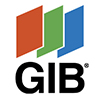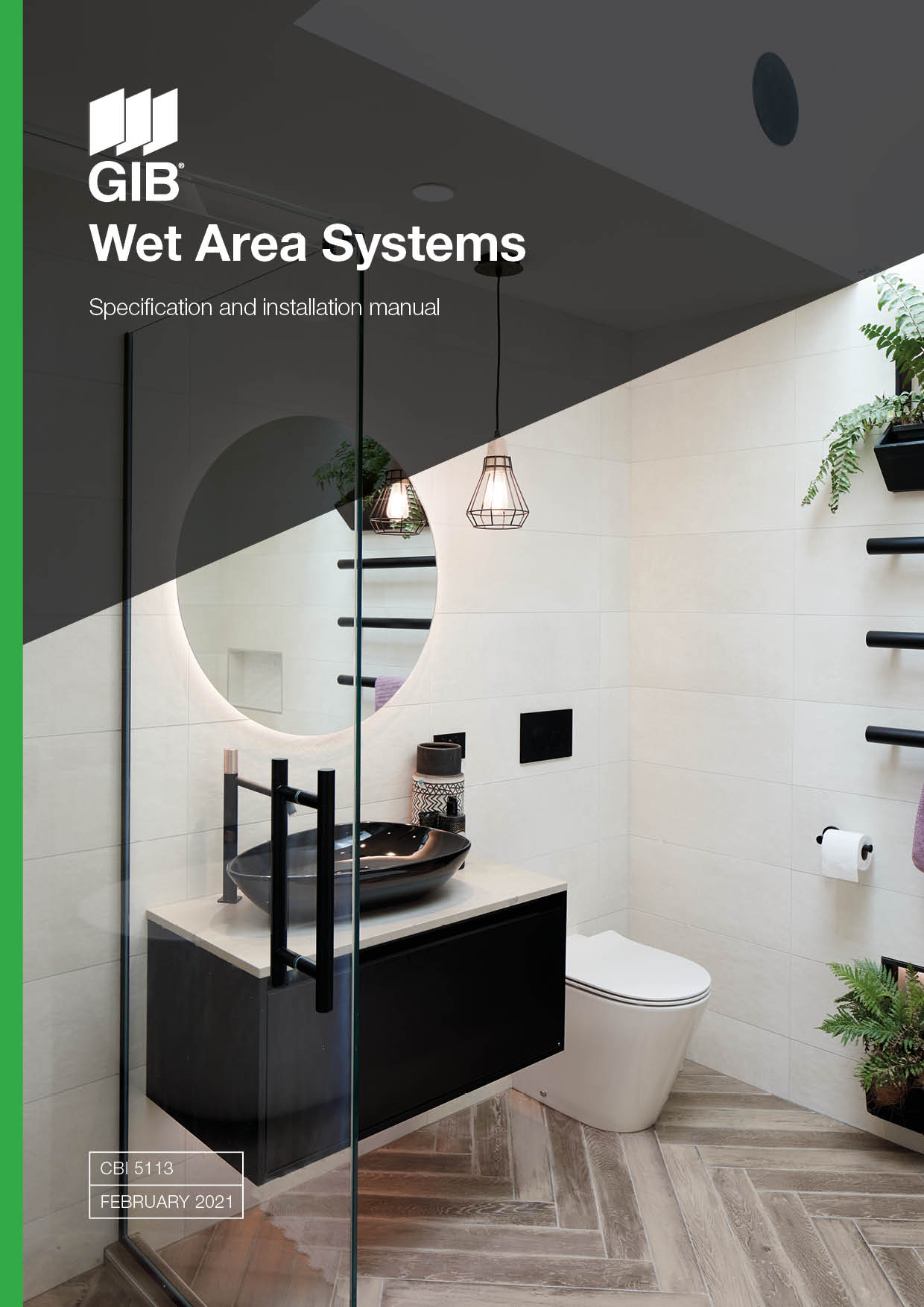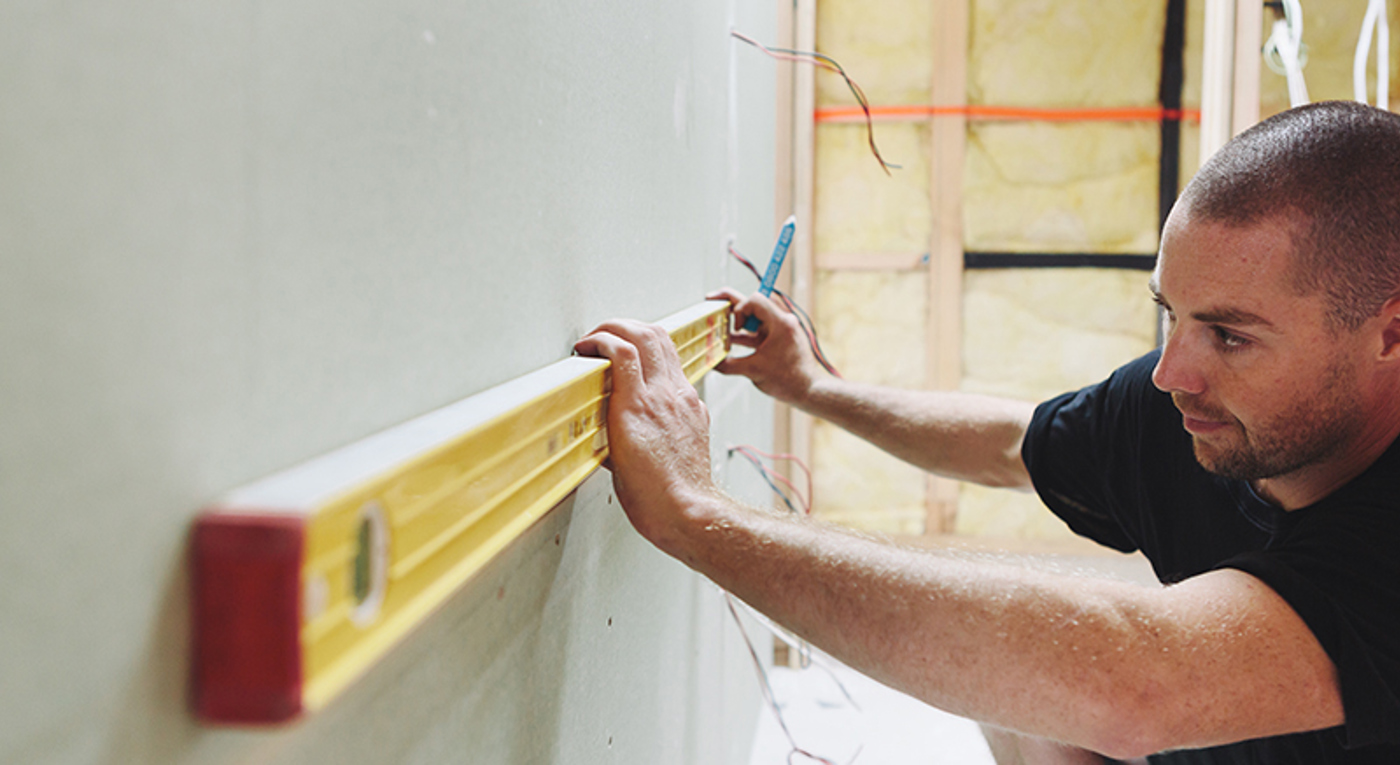
7 Things to consider when installing GIB Aqualine® – Wet Area Systems
1. In Wet Areas, use GIB Aqualine® on walls and ceilings to help protect against moisture and steam damage.
2. Use waterproof membranes in the right areas -such as inside shower areas, baths and some vanities - to be tiled.
Enclosed Shower over bath
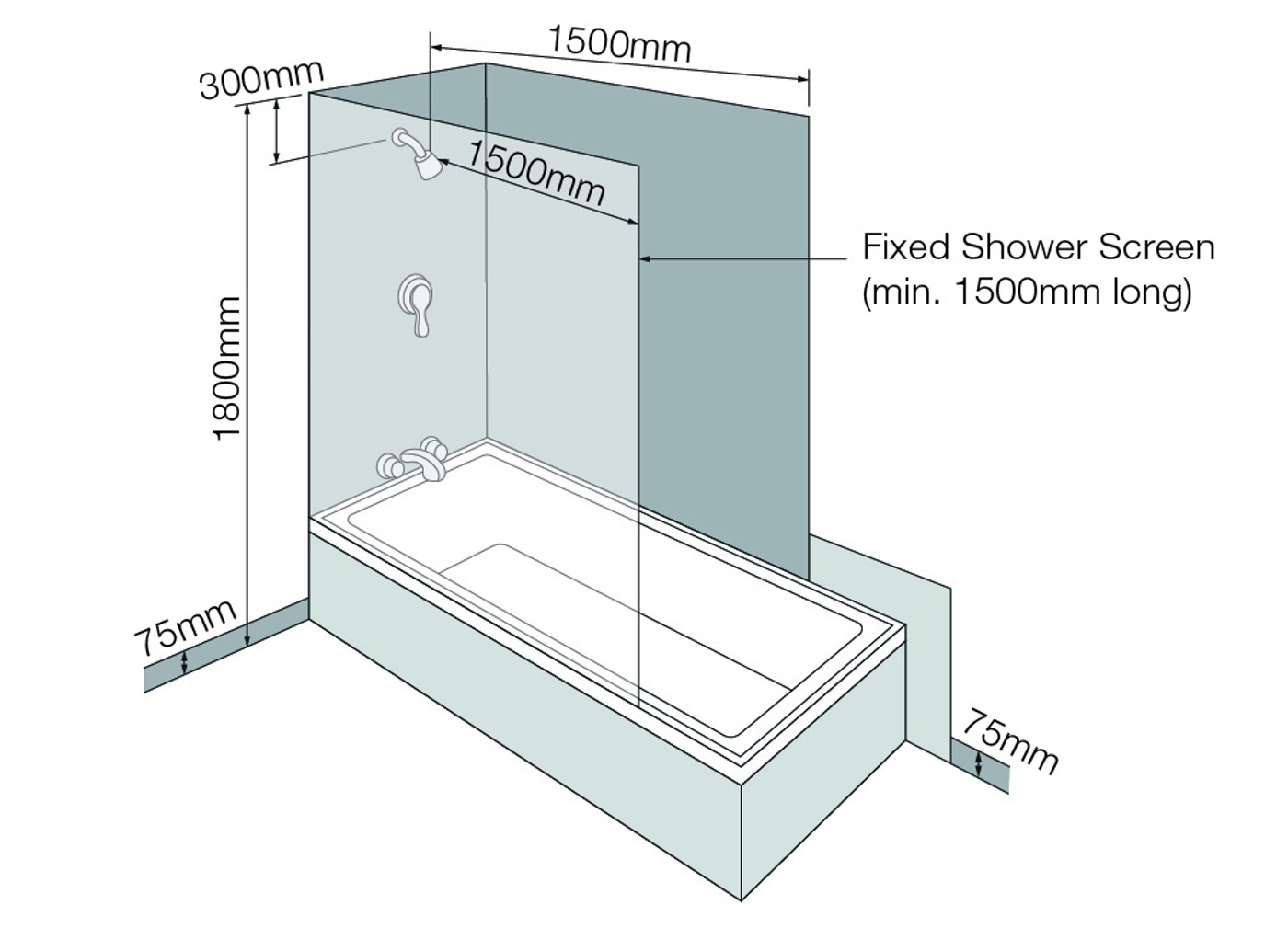
3. To provide stability, it is required to use a GIB® Rondo® NZ18 or GIBFix® metal angle attached to the internal corner of timber framed shower walls.
Vertical corner GIB® Rondo® NZ18 32 x 32 x 0.55mm or GIBFix® 45 x 45 x 0.55mm galvanised steel angle to a minimum height of 1800mm.
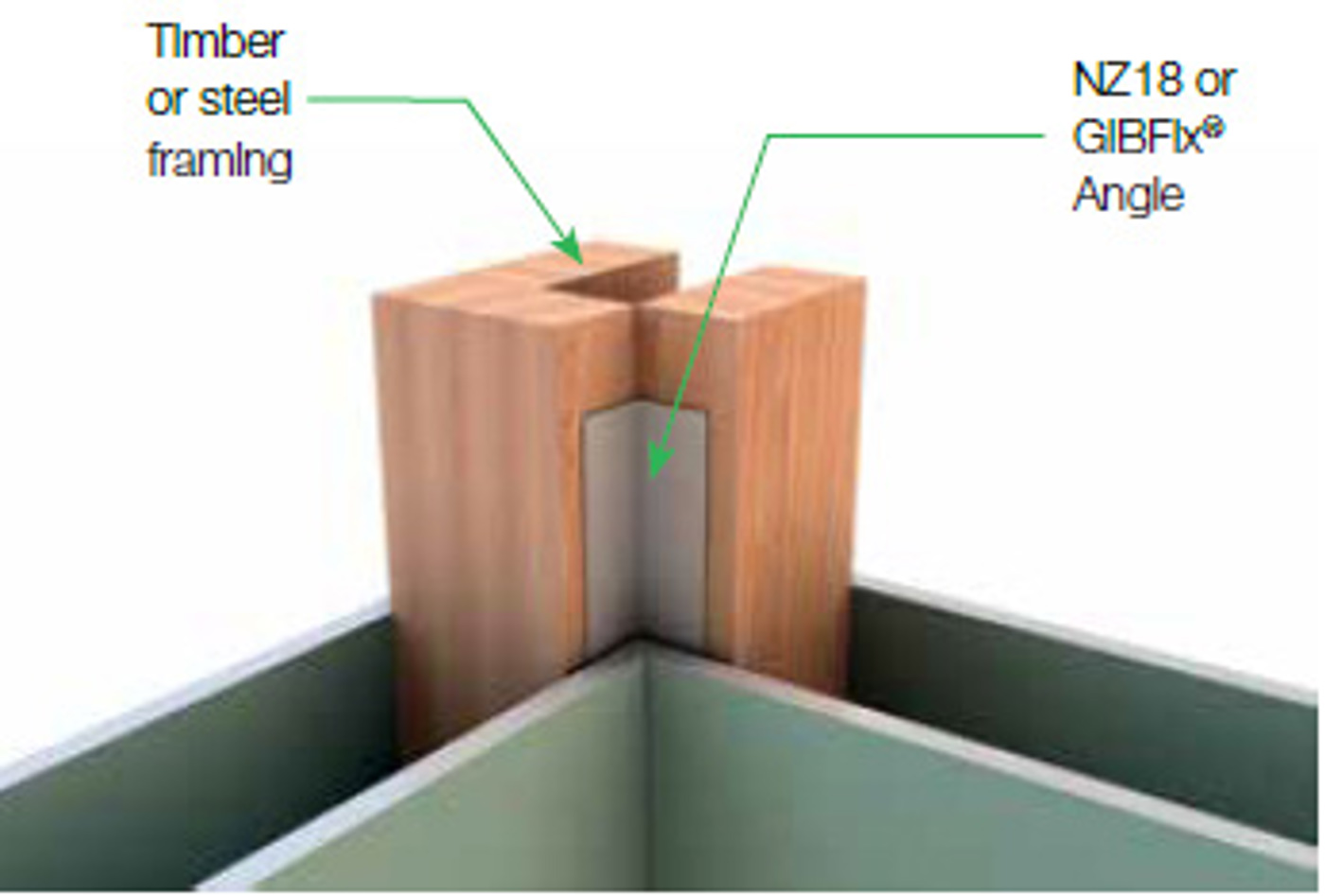
4. When walls are to be painted, fix GIB Aqualine® horizontally where possible to reduce joints and improve the finish.
5. As best practice, use 13mm GIB Aqualine® on ceilings to protect against moisture and steam.
6. When tiling*, fasteners are required at 150mm centres to the perimeter of the sheet and to all intermediate studs.
*10mm GIB Aqualine® is for tile weights up to 26kg/m2 and 13mm
GIB Aqualine® up to 40kg/m2. Most wall tiles weigh under 25kg/m2.
Fixing bracing elements
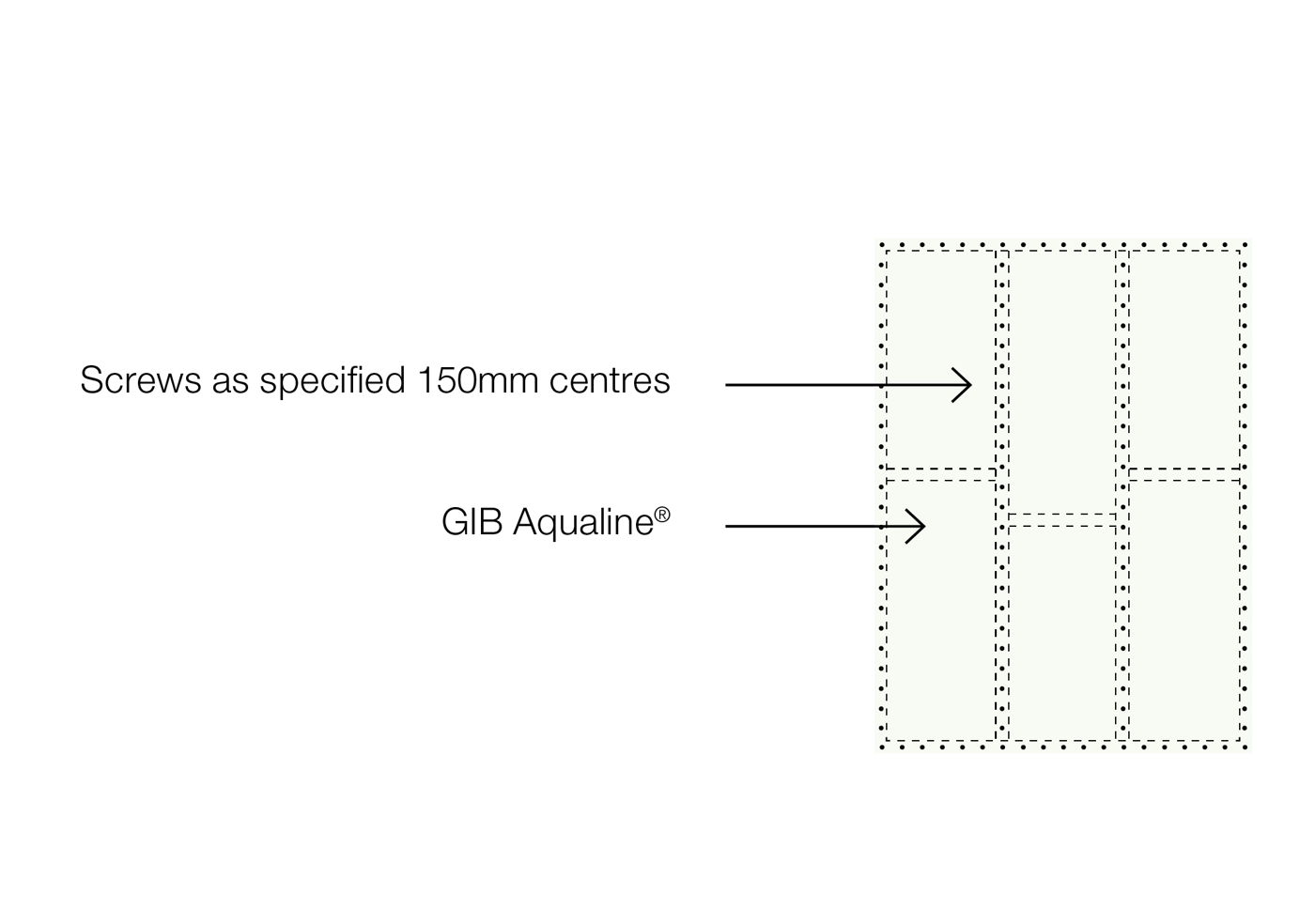
7. Bracing systems must not be located behind showers or baths because of durability requirements, renovation likelihood and other practical issues relating to fixing bracing elements.
